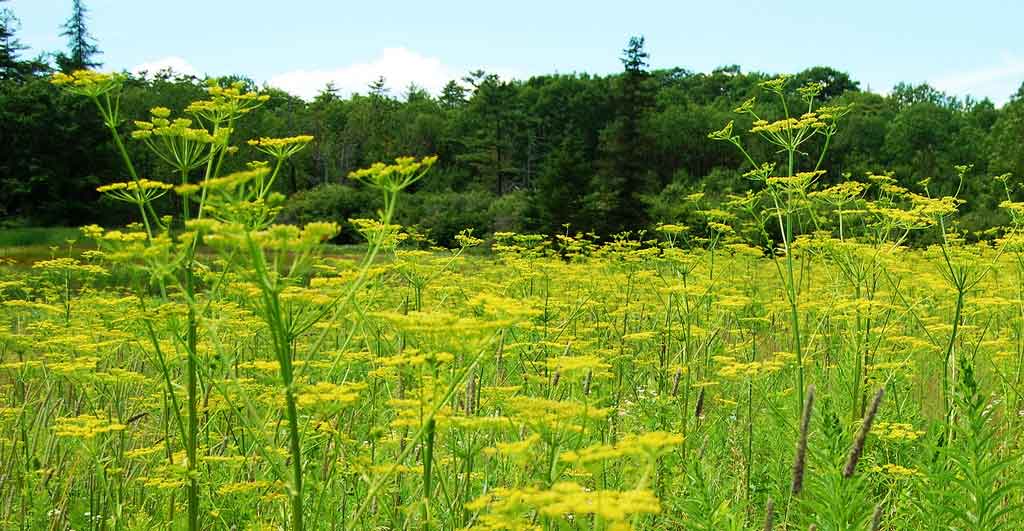
Invasive Species
"Invading species are one of the greatest threats to the biodiversity of Ontario's waters and woodlands. Originating from other regions of the world, and in the absence of their natural predators or controls, invading species can have devastating effects on native species, habitats and ecosystems." (Ontario's Invading Species Awareness Program)
Any species that is non-indigenous to the area and threatens the health of native species is considered invasive. Characteristics include:
- adaptable
- few predators
- can out-compete for food and habitat
- reproduces quickly
- thrives in disturbed systems
Invasive species include plants (both aquatic and terrestrial), animals (including fish) and micro-organisms. Because they are so difficult to eradicate once they have been introduced to a new environment, its critically important to prevent their entry or, at the very least, control their spread once an invasive species is present.
The Resources page of our website includes links to helpful information about some of the invasive specifies currently threatening the quality of life in our Rideau Lakes watershed; we encourage everyone to familiarize themselves with the research and information provided by the various Ontario government agencies and health units we have listed. One of the most dangerous terrestrial varieties of invasive plants we are currently facing is the Wild Parsnip.
Wild Parsnip
This is a dangerous, invasive weed that has spread prolifically over the past few years particularly through Eastern Ontario. During the summer months, Wild Parsnip is the most common yellow-flowered weeds that we see growing in areas such as roadside ditches, forest clearings and shorelines, and along railway tracks, fences, trails and fields.
The sap of Wild Parsnip produces chemicals that cause a severe skin irritation in humans, including intense burns, rashes and blisters which can result in severe scarring. Contact with the eyes can cause temporary or even permanent blindness.
The spread of Wild Parsnip has been escalating in recent years, and its extremely critical that everyone, particularly children, learn to recognize what it looks like and how important it is to avoid contact with it.
What to do if you're exposed to Wild Parsnip sap?
Extreme burns result when skin that has come in contact with wild parsnip sap is then exposed to sunlight. It is critical to wash the affected area with soap and water as soon as possible, and protect the area from exposure to sunlight by covering up with a cool, wet cloth when in the sun.
What to do if you have Wild Parsnip on your property?
Protective clothing, including waterproof gloves and boots, long-sleeved shirts and pants, and eye protection is absolutely essential if tackling the problem. For fewer than 100 plants, options include removal by shovelling, moving, tarping or chemical control. Beyond 100 plants, professional treatment is recommended.
What is being done by local government to deal with invasive plants?
Both counties that encompass the Big Rideau Lake area are planning to undertake extensive spraying programs this spring to combat the spread of wild parsnip and other hazardous weeds (please note, however, that Tay Valley Township will not be spraying). The herbicide "Clearview" is expected to be used; according to reports from both Lanark County and Leeds Grenville County, it is highly effective, and that as long as the chemical spray is applied properly it poses much less danger than exposure to the wild parsnip toxins. However, its important to note that this type of spraying is not selective and will eradicate all broadleaf vegetation in the sprayed area. As well, waterfront communities have expressed concerns of Clearview's mobility in soil, and fear that when it drains into and contaminates area wetlands, it will seriously harm native aquatic and plant life. Both counties intend to publicize where and when spraying will take place, and local residents will have the opportunity to request "no spraying" signs.
Links on our Resources page include more detailed answers to these questions, as well as background information on some of the challenges in controlling and managing the spread of invasive species in Ontario. As well, please refer to the following links for information on weed spraying programs planned by the two local counties:
Leeds Grenville County (includes Rideau Lakes Township)
Lanark County (includes Tay Valley and Drummond North Elmsley Townships)
Tay Valley 2017 Update on Wild Parsnip
Lanark County Media Release - No Spray Options
Opponents of Roadside Spraying
Friends of Lanark County Web Page (group opposed to roadside spraying)



